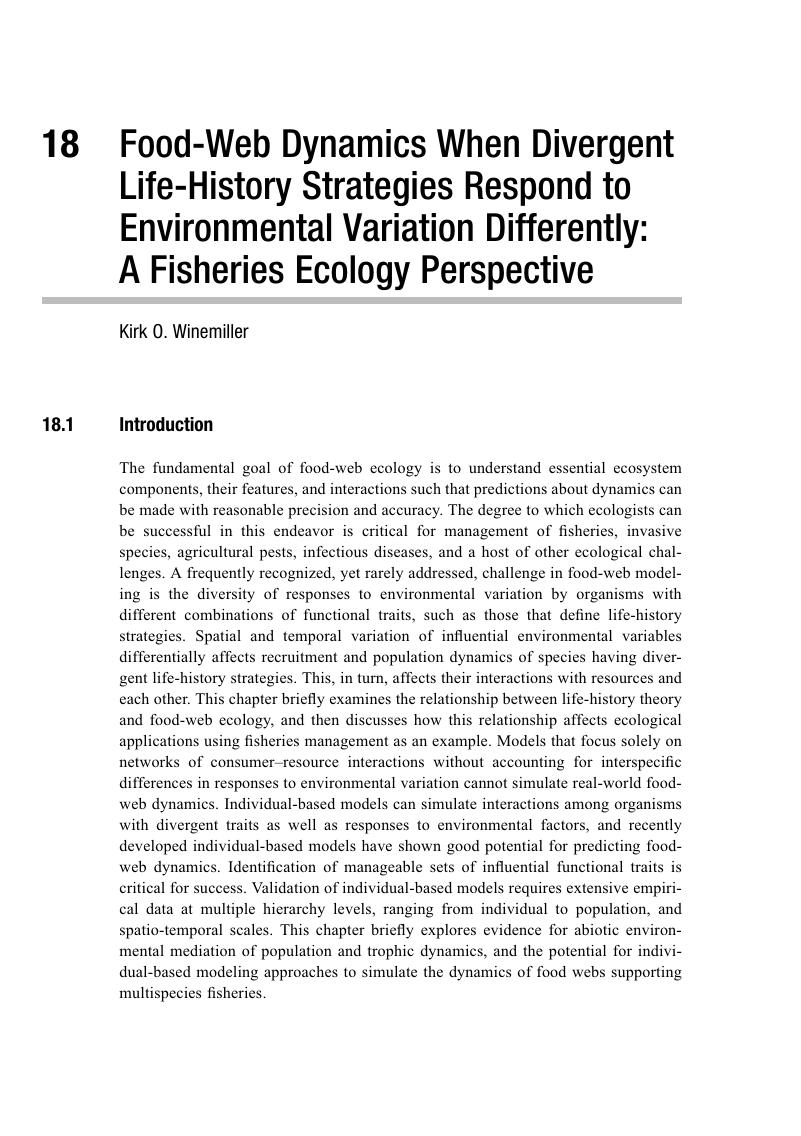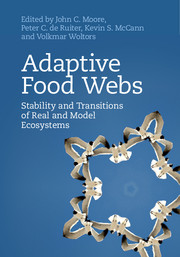Book contents
- Adaptive Food Webs
- Adaptive Food Webs
- Copyright page
- Contents
- Contributors
- Preface
- Introduction
- Part I Food Webs: Complexity and Stability
- Part II Food Webs: From Traits to Ecosystem Functioning
- Part III Food Webs and Environmental Sustainability
- 17 Integrating Species Interaction Networks and Biogeography
- 18 Food-Web Dynamics When Divergent Life-History Strategies Respond to Environmental Variation Differently: A Fisheries Ecology Perspective
- 19 Rare but Important: Perturbations to Uncommon Species Can Have a Large Impact on the Structure of Ecological Communities
- 20 Food-Web Simulations: Stochastic Variability and Systems-Based Conservation
- 21 An Individual-Based Simulation Model to Link Population, Community, and Metacommunity Dynamics
- 22 Structural Instability of Food Webs and Food-Web Models and Their Implications for Management
- 23 Linking Ecology and Epidemiology: The Case of Infected Resource
- Index
- References
18 - Food-Web Dynamics When Divergent Life-History Strategies Respond to Environmental Variation Differently: A Fisheries Ecology Perspective
from Part III - Food Webs and Environmental Sustainability
Published online by Cambridge University Press: 05 December 2017
- Adaptive Food Webs
- Adaptive Food Webs
- Copyright page
- Contents
- Contributors
- Preface
- Introduction
- Part I Food Webs: Complexity and Stability
- Part II Food Webs: From Traits to Ecosystem Functioning
- Part III Food Webs and Environmental Sustainability
- 17 Integrating Species Interaction Networks and Biogeography
- 18 Food-Web Dynamics When Divergent Life-History Strategies Respond to Environmental Variation Differently: A Fisheries Ecology Perspective
- 19 Rare but Important: Perturbations to Uncommon Species Can Have a Large Impact on the Structure of Ecological Communities
- 20 Food-Web Simulations: Stochastic Variability and Systems-Based Conservation
- 21 An Individual-Based Simulation Model to Link Population, Community, and Metacommunity Dynamics
- 22 Structural Instability of Food Webs and Food-Web Models and Their Implications for Management
- 23 Linking Ecology and Epidemiology: The Case of Infected Resource
- Index
- References
Summary

- Type
- Chapter
- Information
- Adaptive Food WebsStability and Transitions of Real and Model Ecosystems, pp. 305 - 323Publisher: Cambridge University PressPrint publication year: 2017



